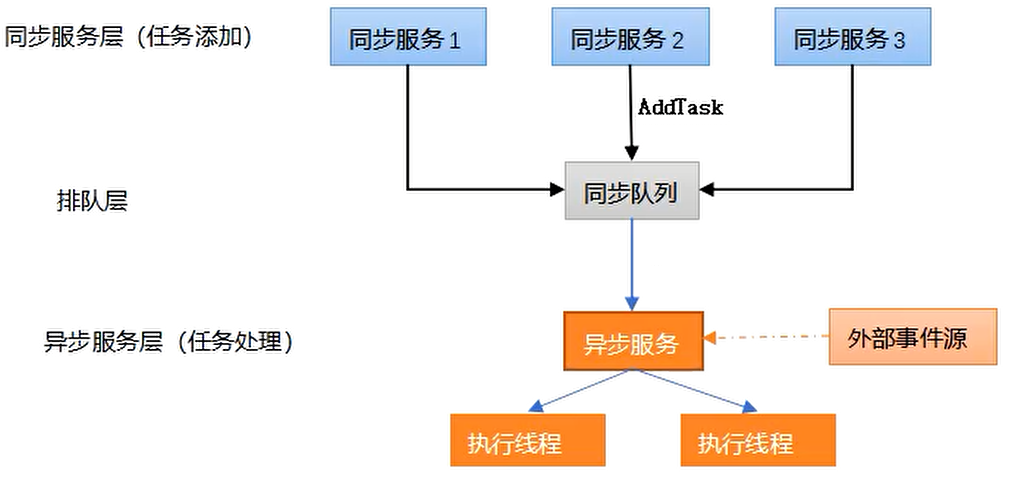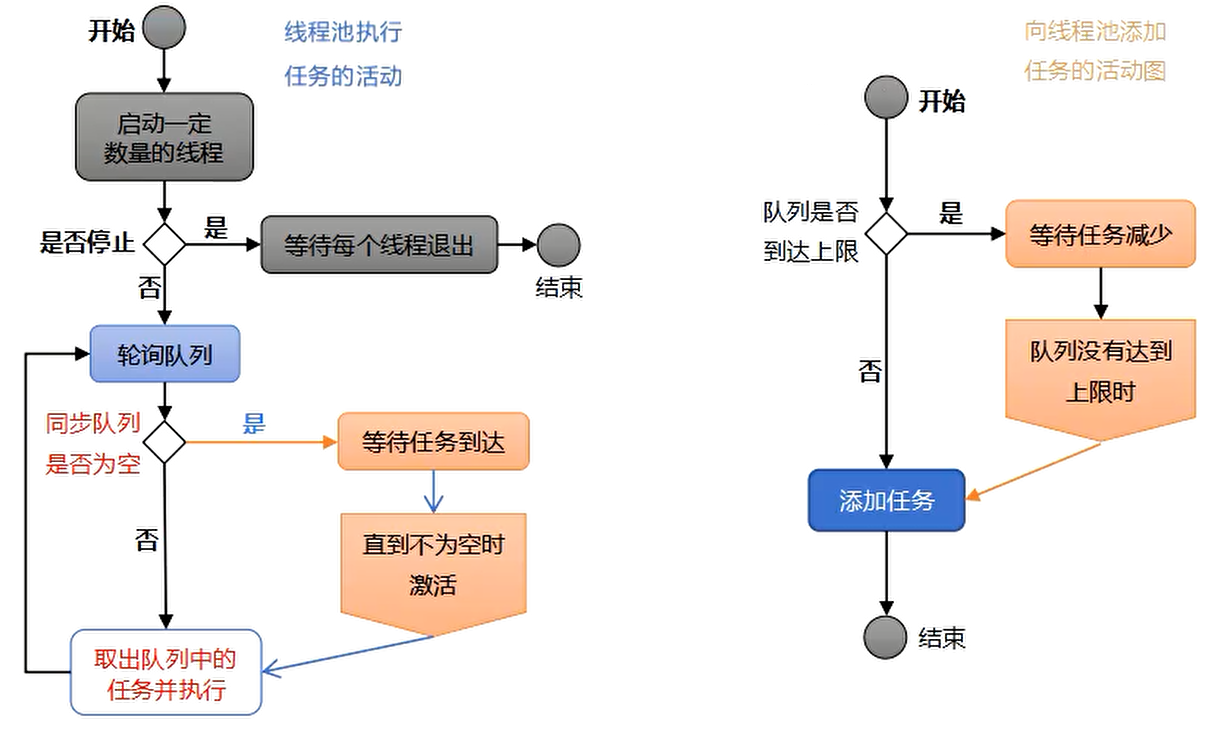内容
- std::function
- std::bind
可调用对象
Cpp中,存在“可调用对象(Callable Objects)”这一概念。准确来说,可调用对象有如下几种定义:
- 是一个函数指针
- 是一个具有operator()成员函数的类对象(仿函数)。
- 是一个可被转换为函数指针的类对象。
- 是一个类成员(函数)指针。
-
可调用对象的使用示例
-
函数指针
-
仿函数
1
2
3
4
5
6
7
| struct Foo
{
void operator()(void)
{
}
};
|
-
可转换为函数指针的类对象
1
2
3
4
5
6
7
8
9
10
11
12
| struct Bar
{
using fr_t = void(*)(void);
static void func(void)
{
}
operator fr_t(void)
{
return func;
}
}
|
-
类成员函数指针
1
2
3
4
5
6
7
8
| struct A
{
int a_;
void mem_func(void)
{
}
};
|
-
测试
1
2
3
4
5
6
7
8
9
10
11
12
13
14
15
16
17
18
19
| int main(void)
{
void (* func_ptr)(void) = &func;
func_ptr();
Foo foo;
foo();
Bar bar;
bar();
void (A::*mem_func_ptr)(void) = &A::mem_func;
int A::*mem_obj_ptr = &A::a_;
A aa;
(aa.*mem_func_ptr)();
aa.*mem_obj_ptr = 123;
return 0;
}
|
从上述可看到,除了类成员指针之外,上面定义涉及的对象均可以像一个函数那样做调用操作。Cpp11中,这些对象(func_ptr、foo、bar、mem_func_ptr、mem_obj_ptr)都被称作可调用对象。相对应地,这些对象的类型被统称为“可调用类型”。
上面对可调用类型的定义里并没有包括函数类型,这是因为函数类型并不能直接用来定义对象;也没有包括函数引用,因为引用从某种意义来说,可以看作一个const的函数指针。
Cpp中的可调用对象具有统一的操作形式,即后面加括号进行调用(除了类成员函数指针),但是定义方法却五花八门。我们试图使用统一的方式进行保存,或传递一个可调用对象时。于是Cpp11通过提供std::funciton和std::bind统一了可调用对象的各种操作。
可调用对象包装器std::function
std::function是可调用对象的包装器,是一个类模板,可以容纳除了类成员函数指针之外的所有可调用对象。通过指定它的模板参数,它可以用统一的方式处理函数、函数对象、函数指针,并允许保存和延迟执行它们。
-
std::function的基本用法示例
-
绑定一个普通函数
1
2
3
4
5
6
7
8
9
10
11
12
13
| #include<iostream>
#include<functional>
void func(void)
{
std::cout << __FUNCTION__ << std::endl;
}
int main()
{
std::function<void(void)> fr1 = func;
fr1();
return 0;
}
|
-
绑定一个类的静态成员函数
1
2
3
4
5
6
7
8
9
10
11
12
13
14
15
16
17
18
| #include<iostream>
#include<functional>
class Foo
{
public:
static int foo_func(int a)
{
std::cout << __FUNCTION__ << "(" << a << ") ->: ";
return a;
}
};
int main()
{
std::function<int(int)> fr2 = Foo::foo_func;
std::cout << fr2(123) << std::endl;
return 0;
}
|
-
绑定一个仿函数
1
2
3
4
5
6
7
8
9
10
11
12
13
14
15
16
17
| class Bar
{
public:
int operator()(int a)
{
std::cout << __FUNCTION__ << "(" << a << ") ->: ";
return a;
}
};
int main()
{
Bar bar;
fr2 = bar;
std::cout << fr2(123) << std::endl;
return 0;
}
|
从上面我们可以看到std::function的使用方法,当我们给std::function填入合适的函数签名(即一个函数类型,只需要包括返回值和参数表)之后,它就变成了一个可以容纳所有这一类调用方式的“函数包装器”。
-
std::function作为回调函数的示例
1
2
3
4
5
6
7
8
9
10
11
12
13
14
15
16
17
18
19
20
21
22
23
24
25
26
27
28
| #include<iostream>
#include<functional>
class A
{
std::function<void()> callback_;
public:
A(const std::function<void()> & f) : callback_(f)
{}
void notify(void)
{
callback_();
}
};
class Foo
{
public:
void operator()(void)
{
std::cout << __FUNCTION__ << std::endl;
}
};
int main()
{
Foo foo;
A aa(foo);
aa.notify();
return 0;
}
|
从上面例子中可以看到,std::function可以取代函数指针的作用。因为它可以保存函数延迟执行,所以比较适合作为回调函数。
-
std::function还可以作为函数入参
1
2
3
4
5
6
7
8
9
10
11
12
13
14
15
16
17
18
19
20
21
22
23
| #include<iostream>
#include<functional>
void call_when_even(int x, const std::funciton<void(int)> & f)
{
if(!(x&1))
{
f(x);
}
}
void output(int x)
{
std::cout << x << " ";
}
int main()
{
for(int i = 0; i < 10; ++i)
{
call_when_even(i, output);
}
std::cout << std::endl;
return 0;
}
|
从上例可以看到,std::function比普通函数指针更灵活、便利。
std::bind绑定器
当std::function和std::bind配合起来使用时,所有的可调用对象(包括类成员函数指针和类成员指针)都将具有统一的调用方式。
std::bind用来将可调用对象与其参数一起进行绑定,绑定后的结果可以使用std::function进行保存,并延迟调用到任何我们需要的时候。
通俗来讲,bind主要有两大作用:
- 将可调用对象与其参数一起绑定成一个仿函数。
- 将多元(参数个数为n, n>1)可调用对象转成一元或者(n-1)元可调用对象,即只绑定部分参数。
-
实际使用示例
1
2
3
4
5
6
7
8
9
10
11
12
13
14
15
16
17
18
19
20
21
22
23
24
25
26
27
28
29
30
31
32
33
34
35
36
37
38
39
40
41
| #include<iostream>
#include<functional>
void call_when_even(int x, const std::function<void(int)> & f)
{
if(!(x&1))
{
f(x);
}
}
void output(int x)
{
std::cout << x << " ";
}
void output_add_2(int x)
{
std::cout << x + 2 << " ";
}
int main()
{
{
auto fr = std::bind(output, std::placeholders::_1);
for(int i = 0; i < 10; ++i)
{
call_when_even(i, fr);
}
std::cout << std::endl;
}
{
auto fr = std::bind(output_add_2, std::placeholders::_1);
for(int i = 0; i < 10; ++i)
{
call_when_even(i, fr);
}
std::cout << std::endl;
}
return 0;
}
|
同样还是上面std::function中最后的一个例子,只是在这里我们使用了std::bind,在函数外部通过绑定不同的函数,控制了最后的执行结果。
我们使用auto fr保存std::bind的返回结果,是因为我们并不关心std::bind真正的返回类型(实际上std::bind的返回类型是一个stl内部定义的仿函数类型),只需要知道它是一个仿函数,可以直接赋值给一个std::function。当然,这里直接使用std::function类型来保存std::bind的返回值也是可以的。
std::placeholders::_1是一个占位符,代表这个位置将在函数调用时,被传入的第一个参数所替代。
因为有了占位符的概念,std::bind的使用非常灵活。
1
2
3
4
5
6
7
8
9
10
11
12
13
14
15
16
17
18
19
| #include<iostream>
#include<functional>
void output(int x, int y)
{
std::cout << x << " " << y << std::endl;
}
int main()
{
std::bind(output, 1, 2)();
std::bind(output, std::placeholders::_1, 2)(1);
std::bind(output, 2, std::placeholders::_1)(1);
std::bind(output, 2, std::placeholders::_2)(1, 2);
std::bind(output, std::placeholders::_1,
std::placeholders::_2)(1, 2);
std::bind(output, std::placeholders::_2,
std::placeholders::_1)(1, 2);
return 0;
}
|
上面例子对std::bind的返回结果直接施以调用,可以看到,std::bind可以直接绑定函数的所有参数,也可以仅绑定部分参数。
在绑定部分参数的时候,通过使用std::placeholders,来决定空位参数将会属于调用发生时的第几个参数。
-
下面来看bind和function配合使用
1
2
3
4
5
6
7
8
9
10
11
12
13
14
15
16
17
18
19
20
21
22
23
| #include<iostream>
#include<functional>
class A
{
public:
int i_ = 0;
void output(int x, int y)
{
std::cout << x << " " << y << std::endl;
}
};
int main()
{
A a;
std::functional<void(int, int)> fr =
std::bind(&A::output, &a, std::placeholders::_1,
std::placeholders::_2);
fr(1, 2);
std::function<int&(void)> fr_i = std::bind(&A::i_, &a);
fr_i() = 123;
std::cout << a.i_ << std::endl;
return 0;
}
|
fr的类型是std::function<void(int, int)>。我们通过使用std::bind,将A的成员函数output的指针和a绑定,并转换为一个仿函数放入fr中存储。
之后,std::bind将A的成员i_的指针和a绑定,返回的结果被放入std::function<int&(void)>中存储,并可以在需要时修改访问这个成员。
实质
1
2
3
4
5
6
7
8
9
10
11
12
13
14
15
16
17
18
19
20
21
22
23
24
25
26
| class Alloc
{
size_t _sz;
int *& _ptr;
public:
Alloc(size_t sz, int *& p) : _sz(sz), _ptr(p) {}
void operator()()
{
_ptr = (int*)malloc(_sz);
}
}
void alloc(size_t sz, int *& p)
{
p = (int*)malloc(sz);
}
int main()
{
int * p = nullptr;
int sz = sizeof(int) * 10;
auto fr = std::bind(alloc, sz, std::ref(p));
fr();
if(p != nullptr)
{
cout << p << endl;
}
}
|

